| The Story of June | ||||
|---|---|---|---|---|
 | ||||
| Studio album by | ||||
| Released | 15 June 2006 | |||
| Genre | Cantopop | |||
| Length | 36:58 | |||
| Label | Gold Label | |||
| Edmond Leung chronology | ||||
| ||||
The Story of June is a Cantopop album by Edmond Leung. [1]
| The Story of June | ||||
|---|---|---|---|---|
 | ||||
| Studio album by | ||||
| Released | 15 June 2006 | |||
| Genre | Cantopop | |||
| Length | 36:58 | |||
| Label | Gold Label | |||
| Edmond Leung chronology | ||||
| ||||
The Story of June is a Cantopop album by Edmond Leung. [1]
| Year | Ceremony | Award |
|---|---|---|
| 2006 | The Metro Showbiz Hit Awards [2] | Hit Duet Song - Get Away with Miriam Yeung (滾) |
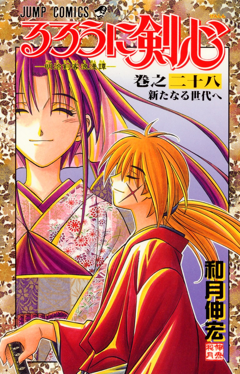
Rurouni Kenshin: Meiji Swordsman Romantic Story is a Japanese manga series written and illustrated by Nobuhiro Watsuki. The story begins during the 11th year of the Meiji era in Japan (1878) and follows a former assassin from the Bakumatsu, known as Hitokiri Battosai. After his work against the bakufu, he becomes Himura Kenshin, a wandering swordsman who protects the people of Japan with a vow never to take another life. Watsuki wrote the series upon his desire to make a shōnen manga different from others published at the time, with Kenshin being a former assassin and the story taking a more serious tone as it continued.
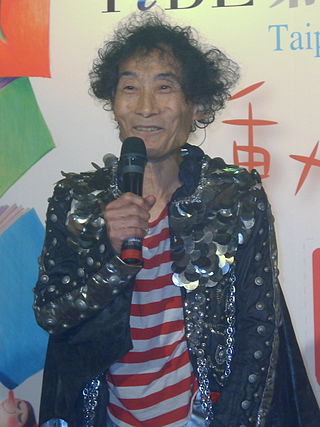
Kazuo Umezu or Kazuo Umezz is a Japanese manga artist, musician and actor. Starting his career in the 1950s, he is among the most famous artists of horror manga and has been vital for its development, considered the "god of horror manga". In 1960s shōjo manga like Reptilia, he broke the industry's conventions by combining the aesthetics of the commercial manga industry with gruesome visual imagery inspired by Japanese folktales, which created a boom of horror manga and influenced manga artists of following generations. He created successful manga series such as The Drifting Classroom, Makoto-chan and My Name Is Shingo, until he retired from drawing manga in the mid 1990s. He is also a public figure in Japan, known for wearing red-and-white-striped shirts and doing his signature "Gwash" hand gesture.

Manhwa is the general Korean term for comics and print-cartoons. Outside Korea, the term usually refers to South Korean comics. Manhwa is directly influenced by Japanese Manga comics. Modern Manhwa has extended its reach to many other countries. These comics have branched outside of Korea by access of Webtoons and have created an impact that has resulted in some movie and television show adaptations.

Naoki Urasawa is a Japanese manga artist and musician. He has been drawing manga since he was four years old, and for most of his professional career has created two series simultaneously. The stories to many of these were co-written in collaboration with his former editor, Takashi Nagasaki. Urasawa has been called one of the artists that changed the history of manga and has won numerous awards, including the Shogakukan Manga Award three times, the Tezuka Osamu Cultural Prize twice, and the Kodansha Manga Award once. South Korean filmmaker Bong Joon-ho called him "the greatest storyteller of our time", while Dominican-American writer Junot Díaz proclaimed Urasawa to be a national treasure in Japan. By December 2021, his various works had over 140 million copies in circulation worldwide.
Makoto Kawada, known by the pen name Makoto Raiku, is a manga artist known for creating the Zatch Bell! franchise. Starting off an assistant for Kazuhiro Fujita on his manga Ushio & Tora, he began creating several one-shots for the Weekly Shōnen Sunday shōnen manga anthology such as Bird Man, Hero Ba-Ban and Genmai Blade. By 1999, he had created the series Newtown Heroes, which was published in Shōnen Sunday Super, a seasonal publication featuring upcoming manga artists and one-shots from the main Sunday book.

Toshiyuki Araki, better known as Hirohiko Araki, is a Japanese manga artist. He is best known for his long-running series JoJo's Bizarre Adventure, which began publication in Weekly Shōnen Jump in 1987 and has over 120 million copies in circulation, making it one of the best-selling manga series in history.
Yellow Tanabe is a Japanese manga artist. She was an assistant for Mitsuru Adachi and Makoto Raiku and made her debut in 2002 with the short story Lost Princess. She is best known for the manga series Kekkaishi, which has been adapted as an anime television series and translated into many languages. She published a one-shot story in the inaugural issue of the revival of Monthly Shōnen Sunday in May 2009.

Rurouni Kenshin: Reflection, known in Japan as Rurōni Kenshin -Meiji Kenkaku Romantan- Seisōhen, is a Japanese original video animation (OVA) which serves as a sequel to the 1996 anime television series Rurouni Kenshin, an adaptation of the manga series of the same name by Nobuhiro Watsuki. It was animated by Studio Deen, directed by Kazuhiro Furuhashi and written by Reiko Yoshida. It was released from December 2001 to March 2002.
Hong Kong comics are comics originally produced in Hong Kong.
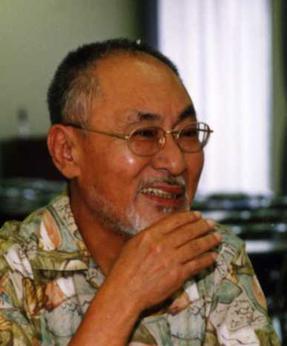
Shin'ichi Nagashima, better known by the pen name Shinji Nagashima, was a Japanese manga artist born in Tokyo, Japan. His pseudonym came about due to a publisher's error when printing his name, and he continued using the pseudonym after that.

Manga Action (漫画アクション) is a Japanese seinen manga magazine published by Futabasha. It is currently published twice a month, on the first and third Thursday. The magazine was originally formed as Weekly Manga Action (WEEKLY漫画アクション) and began publishing weekly from July 7, 1967. It is considered the first true seinen magazine. In 2003 it changed to its current publishing format and dropped the Weekly part of its name to reflect its new schedule.
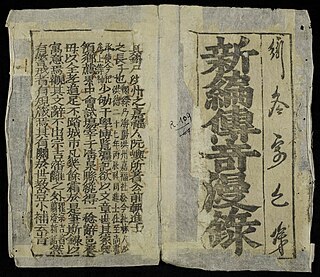
The Truyền kỳ mạn lục is a 16th-century Vietnamese historical text, in part a collection of legends, by Nguyễn Dữ (阮餘) composed in Chữ Hán. The collection was translated into French by UNESCO in 1962.

Bakumatsu Gijinden Roman is a Japanese anime television series created by studio TMS Entertainment, based on the CR Ginroku Gijinden Roman pachinko game, with original character designs by Lupin III creator Monkey Punch. In the fantasy historical story, the main character is a "helper" named Manjirou by day and a phantom thief "retriever" named Roman by night. Roman steals back people's precious items that were unfairly taken from them.
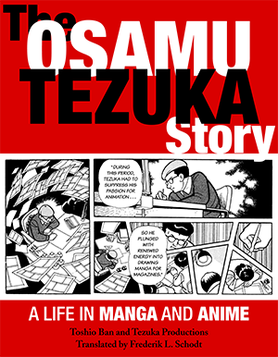
The Osamu Tezuka Story: A Life in Manga and Anime is a biographical manga based on Osamu Tezuka's life, created by Tezuka Productions and Tezuka's assistant Toshio Ban. It was serialized by Asahi Shimbun's Asahi Graph from 1989 to 1992 and collected into two volumes in 1992. It was published in North America by Stone Bridge Press, with a translation by Frederik L. Schodt, on July 12, 2016. The North American edition was nominated for the 2017 Eisner Award in the "Best U.S. Edition of International Material—Asia" category.

Romantic Knight, alternatively translated as Knight of Romantic, is the third album by Chinese heavy metal band Tang Dynasty, released June 13, 2008 on Jingwen Records. It is the only Tang Dynasty album to feature a five-piece lineup.
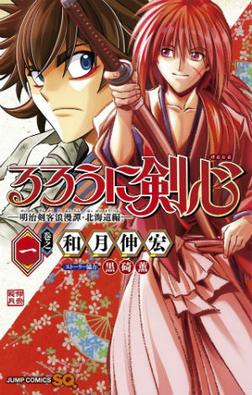
Rurouni Kenshin: The Hokkaido Arc is a Japanese manga series written and illustrated by Nobuhiro Watsuki. His wife, Kaworu Kurosaki, is credited as a story consultant. It is a direct sequel to Rurouni Kenshin and follows Himura Kenshin and his friends in 1883 Japan as they traverse Hokkaido in search of his father-in-law.

Lost Romance is a 2020 Taiwanese romantic-fantasy television series created and produced by Sanlih E-Television. Starring Marcus Chang and Vivian Sung, it tells the story of an editor in a publishing company who magically finds herself transported into the pages of a romance novel – and comes face-to-face with the man of her dreams. The series premiered on Sundays at 10:00 p.m. on TTV in Taiwan from June 7, 2020, to October 18, 2020, and aired on Saturdays at 10:00 p.m. on cable television SET Metro from June 13, 2020, to October 24, 2020. The series was filmed as it aired. It is available for streaming internationally on Viki, Vidol, and Netflix with multilingual subtitles for the global viewers.

Rurouni Kenshin, sometimes called Samurai X, is a Japanese anime television series, based on the manga series of the same name by Nobuhiro Watsuki. It was directed by Kazuhiro Furuhashi, produced by SPE Visual Works and Fuji Television, and animated by Studio Gallop and Studio Deen. It was broadcast on Fuji TV from January 1996 to September 1998. Besides an animated feature film, three series of original video animations (OVAs) were also produced; the first adapts stories from the manga that were not featured in the anime series; the second is both a retelling and a sequel to the anime series; and the third was a reimagining of the second arc of the series.